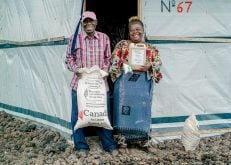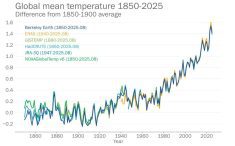GENEVA, July 28 (Reuters) – A La Nina event, which affects rainfall and temperatures in the tropics, may develop in the third quarter of the year but it is likely to be weak and far less intense that El Nino that ended in May, the United Nations weather agency said on Thursday.
La Nina cools the sea surface temperatures in the tropical eastern and central parts of the Pacific Ocean, whereas its opposite phenomenon, El Nino, warms them.
“Even if it develops it is likely to be a relatively weak La Nina event,” Rupa Kumar Kolli, chief of the climate applications and services division of the World Meteorological Organization (WMO), told a briefing.
Read Also

B.C. ostriches culled, CFIA confirms
Ostriches on an embattled Edgewood, B.C. farm have been culled after a prolonged legal battle, the Canadian Food Inspection Agency has confirmed.
“If La Nina does develop, it typically peaks around the end of the year. We would see it tapering off at the beginning of the year,” he said, referring to 2017.
The WMO said last week that the earth is on track for its hottest year on record and warming at a faster rate than expected.
“If a La Nina occurs, it tends to have the opposite effect and attenuates down a bit the global temperatures,” said Maxx Dilley, director of WMO climate prediction and adaptation branch.














